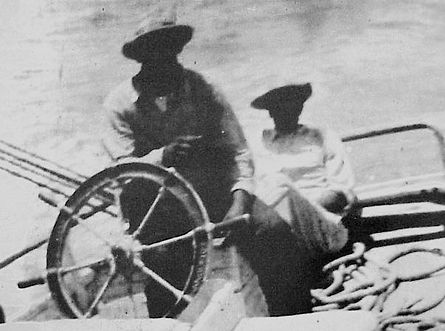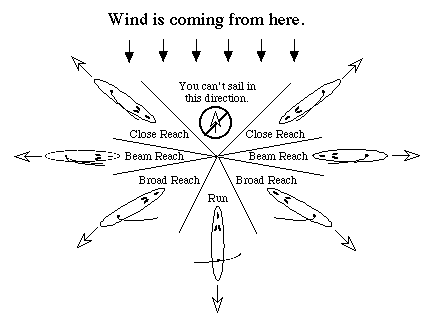

Atlantic Creole
Black Folk Don’t Sail
IV Hand, Reef And Steer

Britannica defines navigation as …’finding the way to the desired destination’
It could be said that navigation is a hope to reach another place when thinking about those first adventurers who crossed the Red Sea to that haze that became land on the other side. And, I would say it is not far off today when sailing. But, the more defined sense of navigation would be their return voyage because they knew that as a known destination. But, I am getting ahead of my course here because we have to refine steerage and for more control we have to sail on as many points of sail as possible when we offer ourselves to the wind directions.
That square sail grew larger and because of that it needed a larger vessel to move with more speed and to do that the vessel needed the mast further back so as not to weigh down and submerge the bow or front end. Somebody, way back then, thought to pull the front of the sail down when sailing with a beam or side wind to not put as much strain on the fore and aft balance and be able to sail closer to the origin of the wind. Somebody decided that this could be made into a normal feature in the design of the sail and they produced the lateen or later the felucca sail.
Though it strained the vessel to the side more than the stern in light enough winds it carried the vessel direction with more sail area much closer to the wind source than the square sail. Off the wind, or with the wind coming from behind the boat and with the mast placed near the middle of the hull the boat sailed fast with a great allotment of sail gathering the wind. This might have been almost a hundred thousand years ago and a similar rig is still used around the Indian Ocean and into the Western Pacific Ocean. Actually, the rig is the traditional sailing rig in the Mediterranean and along the coast of Brazil. It is also used on beach boats in most Caribbean tourist destinations.

The development of the oar as a method of steering seems a logical progression since if you dip your oar or paddle in the water while in motion it will naturally turn the boat your are in. If you move the oar, edge on, aft the boat will turn in the opposite direction from which you turn the oar. The further aft the more control. But, it took a while to figure not to use that one larger oar off the rear quarter area or to have a designated large oar on both quarters ready to steer. Eventually, and now we have moved into more contemporary times that the rudder was invented. I mean around 3100 BC a painting on an Egyptian tomb shows a helmsman steering a vessel with a large oar directly over the stern, which of course means that it was used by the ordinary sailors before it saw a presence on the vessels of the nobility.



Things moved slowly on the water for the next reference to a more upright steering oar with a handle doesn’t show up in drawings for another 2500 years and that is in a Chinese vessel as a true rudder. And here is our first real invisible but visible maritime heritage link. The Chinese were trading in Africa. They obviously had followed the ancient route that had taken their ancestors to what is now China. It seems perfectly logical to maritime historians for the Chinese to sail from China to Africa but there is no logic suggested that Africans sailed from Africa to China first. It is sort of like the Monsoons brought trade from India to Africa but the Africans are not mentioned as taking trade to India? Who chose to decide that? The Indian Dhow looks so much like the Tanzanian Dau. If you put where the original humanoids came from you start to wonder about how maritime history is being taught.